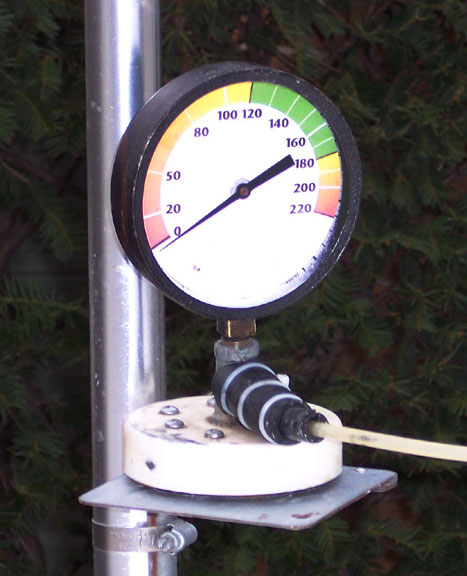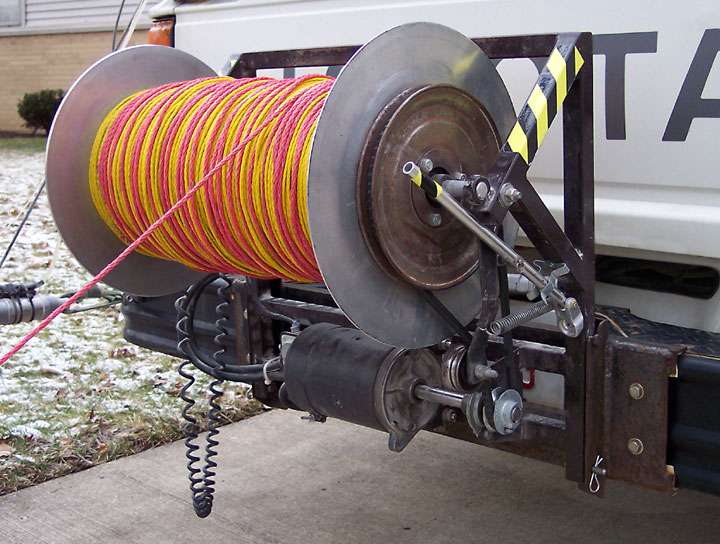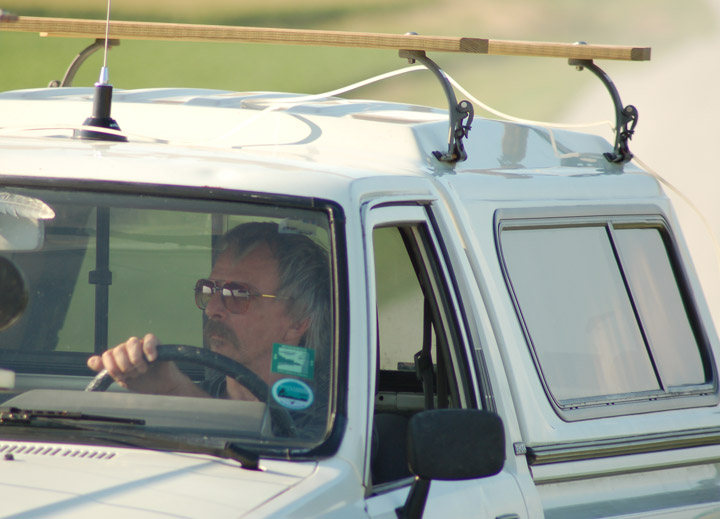

by Marty Bunner, former Region 7 Director and guru to the RHGPA.
(Reprinted for benefit of all static line tow pilots everywhere, especially newer members).
A contradiction? No. The pilot is responsible.
The driver must explicitly follow the pilot's commands and/or the launch director's commands. The driver's function is to know his job and to respond immediately and precisely to the pilot/launch director.
What is the job? To tow the hang glider pilot to the release altitude, safely and successfully, by using standard operating procedures (SOP).
Before laying out the line:

1. Know who the pilot is, if only by name, for communication purposes.
2. Be sure the pilot is knowledgeable, informed and experienced with the system and equipment (s)he is about to be towed on. (E.g.: the pilot may know platform launch on a payout winch system but now is doing a static tow.) You may decline to drive if the pilot or equipment is in less than ideal condition.
3. Know the pilot's desired takeoff tension.
4. Be familiar with the tow vehicle; each tow rig is different. Familiarize yourself with the equipment and how the vehicle accelerates and handles.
5. Check the tow setup. Know, not assume, that it is in proper and fully functional working order.
6. Check the weak link.
7. Perform a radio check at launch and after the line is paid out. Keep radio conversation to only the essentials during the entire tow. In communicating with the pilot, always say his or her name. (This is critical when two or more gliders are under tow.)
8. Be sure someone is standing on the line as you, the driver, lay it out.
After laying out the line:
9. Test the gauge and hydraulic cylinder operation with the line hooked up. Be sure all systems are functioning and ready for the tow.
10. Inform the pilot/launch director of your status: "Hooked up and standing by."
11. When ordered to remove slack from the line, do exactly as requested. If 20 pounds is called for, put the gauge needle at 20, not 15 or 25.
Starting the tow:
12. When commanded to "GO,GO,GO!", aggressively and precisely go to the takeoff tension from step 3 ... not 10-15 pounds more or less. When speeding to takeoff tension, anticipate the needle movement to hit and hold tension exactly, not overshoot. Do not try to use the vehicle's mirrors during launch.

13. If tension is exceeded by 15lbs or less, don't aggressively brake to bring tension down Ñ rather, smoothly let off the throttle to bring the needle near, but not below, minimum launch tension.
14. Go to maximum tension only when asked. Do not assume or make decisions for the pilot. Remember, the pilot is the one in command. In other words, don't go to MAX until the pilot authorizes it.
15. Focus only on the pressure gauge during the entire tow. Don't watch the scenery, topless babes, etc., or the pilot's safety will be compromised.
16. When commanded to "STOP THE CAR!", do so immediately by coming to a full and complete stop. The pilot may be in trouble, in a thermal, or perhaps just as far as he wants to go – don't waste time trying to find out why.

Retrieving the line:
17. This is the most dangerous aspect of the system. You must be alert and cautious as the line rewinds at 1000-1500 ft/min.
• Park the vehicle in the direction of the fallen line.
• Leave the vehicle running; don't drain the battery.
• Use a towel wrap or glove to guide the line onto the spool.
• Keep the moving line away from you body – rope rash hurts.
• Don't let the ring or links on the end of the line slam into you, bystanders, vehicle or spool.
• Think safety!
18. Be alert for partially separated splices, knots, cuts or excessive wear to the line. Stop rewinding and repair as needed. Notify the tow vehicle owner, especially if it couldn't be fixed.
19. Drive back to launch at a moderate, sane speed. The tow will be only as good as the equipment and the responsible tow driver following these SOP's.
These are not my SOP's, but our SOP's. If they aren't right or need more clarification, let me know. It was written for us so we will have some basis for training new drivers and testing present drivers this spring.

NEXT PAGES:
General overview
Parts of the system
Bridle info
Driver info
Towing criteria
Linknife Static Tow
DISCLAIMER: As with all aviation endeavors, your choice and use of equipment is totally up to you. It is assumed you are an experienced HG or PG tow pilot who is intimately familiar with the style of towing you will be doing. As such, YOU ASSUME ALL RISK AND LIABILITY in the use of the Linknife, as well as all other parts, functions and personnel involved in the towing and flight operations. If you do not have experience in towing, please contact an instructor for expert training. Trying to learn on your own can, and probably will, result in your injury and even death. Many pilots have paid the ultimate price so we may now tow as safely as never before possible. Please learn from their lessons.
Linknife Home | Static Line | Payout/Platform | Aerotow | Testimonials
Reel Pilots Home |
Hewett's Towing Criteria |
Driver SOP
Static Line Basics |
Static Towing Parts |
Hewett Bridle Basics
Parachutes |
Lockouts |
Payout Primer |
Flying Sites
Links clubs/info |
Links2 states/countries
Airshow |
Site Opening Primer
Birren Design Company | Site Map
©2000-2023 Peter Birren email
Powered by w3.css